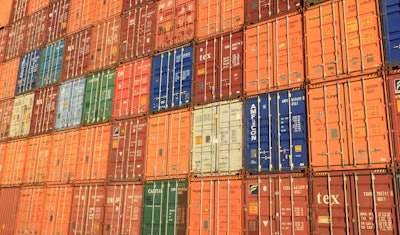
In 2021, shippers tackled soaring customer demand, costly ocean shipping rates and slow supply cycles, meaning more containers were needed to fulfill the same requests. And the global pool of shipping containers increased by 13% as companies upscaled to meet their orders.
Today the battle has been flipped upside down: Demand is low, and so are freight rates. SHIFEX, the freight forwarder rate index, recently recorded the lowest rate of $3,500 to move a 40-foot container between China and Long Beach port in 24 months—an 80% year-on-year drop. Shipping companies have their hands tied, this time with a pileup of empty containers causing congestion, and profit margins are low.
So, what can shipping lines do to take their container capacity from excess to success and inject revenue into the supply chain cycle?
Leverage data visibility and centralization
The cost for empty container logistics—repositioning, storage, handling, maintenance and repair—accounts for up to 12% of a shipping line’s operating costs. That’s why logistics providers must keep track of container movements; fragmented data streams and manual input will not suffice in a world that runs in real-time.
Centralized systems are helping shipping companies monitor container logistics and map them with customer demand, costs, warehouse storage, port blockages and vessel capacity. With high-quality data, reports can demonstrate the levels of container utilization, stock developments, detention and demurrage, first-in-first-out (FIFO) violations and port delays.
Moreover, satellite, weather and traffic data support logistics teams in understanding the external environment, while internal monitoring of vessels, GPS and engine levels narrow in on assets in operation. They can identify where their containers are located, which assets are due for maintenance to avoid breakdowns and traffic jams en route, and what ports and roads are clear for cost-effective delivery.
Having a detailed overview of the entire network’s efficiency allows the central planning team to execute more control over underperforming areas and devise appropriate plans.
Predictive analytics and demand forecasting
Many shipping companies are currently reliant on commercial or retailer forecasts to define their stock levels. However, historical and current container stock, scheduled container pickups, and container returns can enable them to rely on their own data. This is where predictive analytics comes into play. Planning teams can calculate future stock levels and identify excess or resupply locations without waiting for external reports.
With predictive analytics, algorithms continuously estimate demand and use the actual figures to validate their results, improving future predictions even more. This way, shipping companies can gain insights into rising trends or seasonality. Take the weather, for instance. Although it is uncontrollable, organizations can flexibly react to real-time weather-based shifts by assessing historical patterns and their impact on operations.
Accurate demand forecasting helps shipping companies stay ahead of upcoming peaks or slows so they can move their containers accordingly. In low season, they can relocate empty containers to cheaper storage units away from the port, alleviating congestion and pileups. Or confidently rent idle containers to other providers on short-term contracts.
Lean container strategies
Shipping companies that follow just-in-time (JIT) strategies keep a bare-bones inventory of containers—what many call the cause of the pandemic supply chain crisis. This isn’t the case.
Make the best use of scarce materials by only building a product when confirmed demand for it led to minimal disruption during the period. Instead, keep a small six-month stockpile of 500 critical parts to continue with lower production rates.
Similarly, shipping companies that store away an optimal supply of containers can precisely serve the forecasted demand and minimize congestion. Accurate demand forecasting means shipping companies can identify the fleets’ required number of containers and plan their annual contracts accordingly—avoiding container excess or shortages and protecting their bottom line.
Nevertheless, it’s no good having all your contracts fixed, and you do not want them to all be fluctuating either. A stable long-term contract assures steady business throughout the year. At the same time, when shipping rates are low, or demand is high, make the most of the situation and additional short-term leases can help.
Collaboration with short-term leasing vendors further increase efficiency as it gives the flexibility to take on extra demand at short notice or enjoy a quiet period without the responsibility of empty assets.
Customer demand is constantly changing, and shipping companies continue to juggle and prepare for fluctuations so they can react in real-time. For this reason, making more data-driven decisions and leveraging centralized platforms with leaner strategies can help to improve shipping line operations and the bottom line.



















